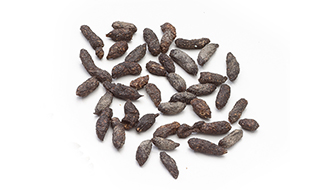
Hi my name is Brendan Mangnitz, I have been in the Nuisance Wildlife Removal industry now for nearly 6 years since I graduated from College at UF with a background in Entomology and Wildlife Biology. I have seen and controlled just about any wildlife issue you may think of. I have dealt with bats in apartments complex, rat removal from your everyday household, rats in the attic, rats digging up yards, rats in pools, rats stuck in chimneys, and the list goes on and on. I have used several different control and removal methods for rats and that’s what I want to share with you guys on our website here at http://animalcontrol-experts.com.

One of the biggest questions most customers ask me in the field is what kind of feces is this? How can I tell what kind of animal left these droppings in my attic? How do I know whether or not this is indeed rat feces and not raccoon poop or squirrel poop or possum poop? There a lot of distinguishing factors when it comes to determining rat poop, as you can tell from the pictures on this page.
How big are Rodent droppings? Rodent poop is about the size of a staple and about 1-3 cm in length; Rodent or rat poop will look a lot like a black seed. Rodent poop or rat feces is generally black. If the rat poop is very dry and brittle chances are that the rodent poop is not fresh. If the rat droppings are very soft and mushy then chances are it is very fresh. If you look at the dropping in the attic or around your house and you see a white tip at the end of the dropping that is more often a reptile dropping. But if you see the rat droppings that look like seeds, a little oval, and there is no white at the end of it then you are more than likely dealing with rodents and rats.

If you are trying to identify rodent poop or trying to figure out how you can tell if you have rodents in the attic (based on the poop that's on the insulation), you're going to look for the following distinguishing factors. Generally rodent poop is about the size of a seed; it is about a half inch long and about 1-3 cm thick. Depending on the size and the age of the rodent that is in your attic, rodents also leave a lot of poop behind. I have been in attics that were completely covered. Rodent breeding cycles are very fast and the population can grow rapidly. So if you see a lot of feces in the attic or even just a little bit of rodent poop, you want to make sure you get on top of it very, very fast. Like I said earlier, the easiest way to tell if it is rodent poop is going to be the size and color. Take a look at these pictures and they will help you identify which type of rodent you have in your attic or in the house.

Regardless of what animal your poop belongs to, you want to make sure that you DO NOT touch feces you find in your attic. You should call a professional for wild animal poop removal. If you do decide to remove the poop you find in your attic without the assistance of a professional wildlife control team, you definitely want to make sure you have a respirator on because rat feces contains several different types of bacteria and insects that can harm you and potentially lead to death. One horrible health issue that stems directly from rat poop is roundworm. Roundworm, if ingested, leads to a variety of symptoms and can become fatal. Rat roundworm can become ingested by simply breathing it in if you are around rat feces. If you do not treat the roundworm that you ingest from rat poop, you can eventually die. There are also other bacterias affiliated with rat poop such as histoplasmosis and hantavirus, which are both diseases that can lead to severe respiratory issues.
Whenever rats, opossums and squirrels poop, they will defecate wherever they're walking. There is no rhyme or reason why rodents will only poop in certain areas collectively. The rodent feces will be all throughout the attic, in the insulation, under the insulation, everywhere, that is why you will need to sanitize the entire attic to eliminate any of the bacteria.

Another frequent question that customers call me and ask me about is; what does rodent poop smell like? To be honest with you, it smells exactly how it sounds…terrible. Feces from rodents have a very strong odor mixed in with urine, so the feces will start to smell like ammonia as well as rotting feces. Flies, larvae and other parasites will gather around the rat poop in your attic, so you want to make sure you're extremely careful. Remember that diseases can easily and instantly become ingested or inhaled from simple proximity with rat roundworm. Eggs can also be found in feces and urine from rats, which can also be inhaled. Larvae that is inside this parasite will start to affect the central nervous system of a human, causing diarrhea, dehydration and can lead to further health issues. For this reason, you should hire professional rat trapper and professional rat removal companies when dealing with rats in the attic. A professional rat company like 24/7 Wildlife Control uses proper respiratory safety equipment, including hazmat suits, to protect the working technicians during rat feces removal. Professionals will remove the entirety of the rat poop and rat urine in the attic to safely to ensure the environment is clean and sanitized and prevent any inhalation of hazardous diseases. Once rat poop is removed by a professional wildlife control company, your rat trapper will sanitize the attic and all of the areas where the rat poop was in order to guarantee the safety of our customers clients and family.

Rat droppings around your property, home, lawn or attic need to be removed immediately. Rat poop does smell; rats are wild animals that live outside. Rats also tend to defecate in residential pools, as well as lakes, rivers and ponds. If you find rat poop in any of these places or around your house or attic, stay away from it and make sure your dogs, cats and kids don't touch it, eat it or play with it. You do not want your children or pets to ingest any of the harmful bacteria and diseases that are affiliated with rat poop or rat urine. Excrement found in your attic commonly belongs to rats; if you think you may have an issue with a rat infestation in your attic, please inspect the images on the left to confirm that what you have found indeed belongs to rats. You'll be able to get a good idea of what species the poop you found belongs to. There are a lot of features of rat poop that makes it different than other animal feces, so please pay a lot of attention to these. These rat feces pictures will help you when trying to identify whether or not you are dealing with rats in your attic or rats pooping on your lawn.

If you think you are having an issue with rat poop and want to get an expert opinion, give me a call! My name is Brendan Mangnitz with 24/7 Wildlife Control and I am always available to help identify what kind of feces you have found and would be happy to send one of our technicians out to assist you.